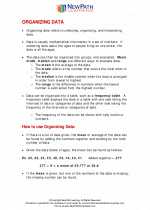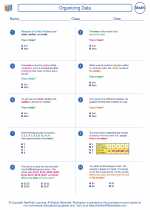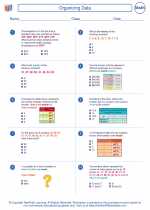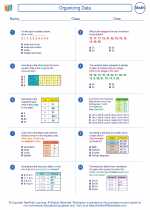Organizing Data -> relative frequency
Relative Frequency
Relative frequency is a statistical measure that describes the number of times a particular event occurs in a dataset, relative to the total number of events. It is often expressed as a fraction or a percentage.
Calculating Relative Frequency
To calculate the relative frequency of an event, you can use the following formula:
Relative Frequency = (Number of times the event occurs) / (Total number of events)
Example
Let's say you have a dataset of 50 students and you want to calculate the relative frequency of students who like math. If 20 students like math, you would calculate the relative frequency as follows:
Relative Frequency = 20 / 50 = 0.4
Interpreting Relative Frequency
Once you have calculated the relative frequency, you can interpret it as a percentage by multiplying the result by 100. In the example above, the relative frequency of students who like math is 0.4, which is equivalent to 40%.
Study Guide
Here are some key points to remember about relative frequency:
- It is a measure of how often a particular event occurs relative to the total number of events.
- It is calculated by dividing the number of times the event occurs by the total number of events.
- It can be expressed as a fraction or a percentage.
- To interpret relative frequency as a percentage, multiply the result by 100.
- Relative frequency is useful for comparing the occurrence of different events within a dataset.
By understanding and applying the concept of relative frequency, you can gain insights into the distribution and occurrence of events within a dataset.
.◂Math Worksheets and Study Guides Seventh Grade. Organizing Data

 Worksheet/Answer key
Worksheet/Answer key
 Worksheet/Answer key
Worksheet/Answer key
 Worksheet/Answer key
Worksheet/Answer key
